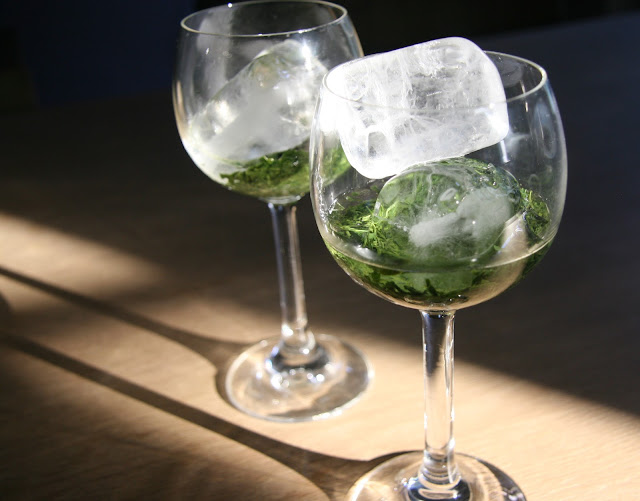Matcha green tea Harvest

The Matcha House Europe, a company specializing in the import of Japanese green tea Matcha to Europe, reports the first harvest in the fields of its Japanese business partner Aoi Seicha, located in the region of Nishio, near the center of the Japanese main island of Honshu.
Since the start of the spring has not stopped raining and the temperatures have followed quite low, which has caused a later start of the harvest season this year. But at last the sun rose and the harvest could begin on 15 May.
Harsh weather conditions have meant that the field had to stay covered longer than usual, waiting for the rising temperatures, which has caused outbreaks of tea have grown more slowly. To get good quality tea leafs the field must remain well covered, protected from sunlight, and wait for the shoots are big enough. This provides the bright green color to Matcha and its delicious aroma. This year's harvest has been much lower than in the past because of the bad weather.

Nishio is one of the most important regions in production of “Tencha” – raw material which makes Matcha, the typical Japanese powdered green tea used both for the traditional tea ceremony and for cooking. Nishio produces most of the Matcha tea in Japan.

Along the Yahagi River there is a high hill called Inariyama, where Tencha is cultivated. The fields extend over more than 150 hectares and annually produce 350 tons of Tencha in Nishio. One reason that this is a privileged place for the manufacture of Matcha is that the composition of the red earth and sands for the area provides good water drainage. Another is that thanks to Yahagi river, the earth keeps the humidity level necessary for the proper growth of Tencha.
Green tea harvest starts around May 1 every year in Japan. This year, the weather has been unfavorable for many tea fields in Japan. However, Nishio fields have been able to get rid of the harmful effects of weather and were able to maintain its high production capacity at the same level as previous years. Its geographic location and temperate climate have helped get rid of the effects fortunately.
AOI SEICHA started the first harvest on the 1st week of May as scheduled. In this season, all Nishio fields are covered by a huge black cover. It looks like a big black nori seaweed that extends to infinity. The professional harvesters called “Tsumiko” or affectionately “Tsumiko San” continue collecting the leaves from sunrise to sunset, normally in silence and applying very rigorous in their work. The average amount of tea leaves that Tsumiko collects is 15kg per day, although a veteran Tsumiko can collect up to 20kg per day – this is equivalent to 3 times of full huge basket. The enormous effort of these people is key to Nishio can stay ahead of the production of Matcha in Japan.

Let us introduce a Japanese famous song “Tea harvest”
♪ ♪茶摘み ♪ ♪
夏も近づく八十八夜
野にも山にも若葉が茂る
あれに見えるは茶摘みぢやないか
あかねだすきに菅 (すげ)の笠
♪ ♪Tea harvest ♪ ♪
We are in the 88th night
from the first day of spring
Young leaves cover the mountains and fields
Look that mountain
They are doing Chatsumi, the harvest of green tea
Girls with red tasukis tied to their shoulders
and baskets in hand
The first harvest of the year is the most important and leaves collected during it will be used for tea ceremony grade. These leaves are sweet and tasty and the color is bright green. They are first quality sheets also in regards to nutrients because they retain all the vitamins and food accumulated since the fall of last year until this spring.

The second, third and fourth harvest made by machine will be used for cooking grade. This grade has a stronger flavor and a little bitter, but it is the appropriate level for cooking sweets (cakes, chocolates, cookies, etc) . The demand of Matcha for cooking increases every year worldwide and AOI SEICHA and THE MATCHA HOUSE EUROPE prepare for this trend increasing enhancing the capacity of harvesting machinery.



Comments
Post a Comment